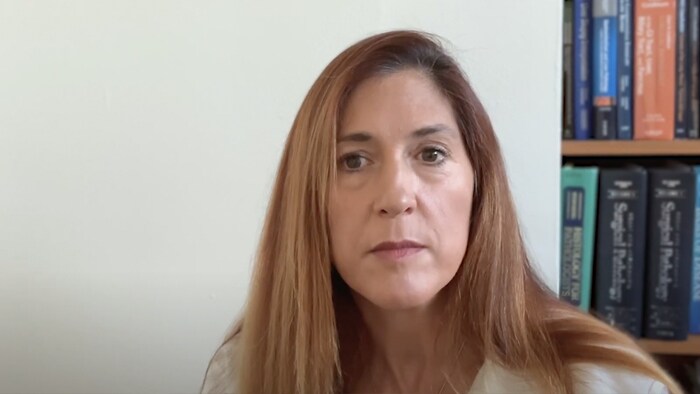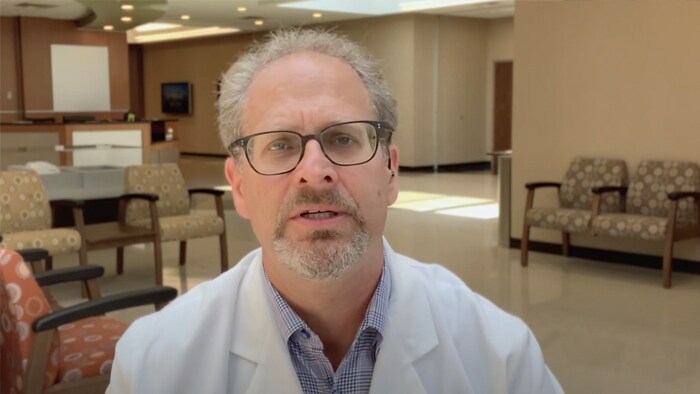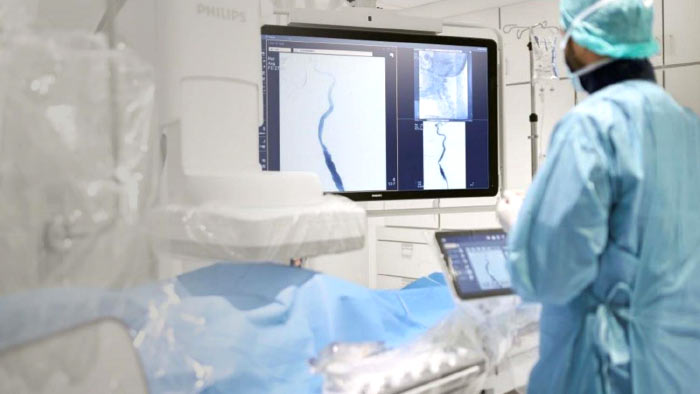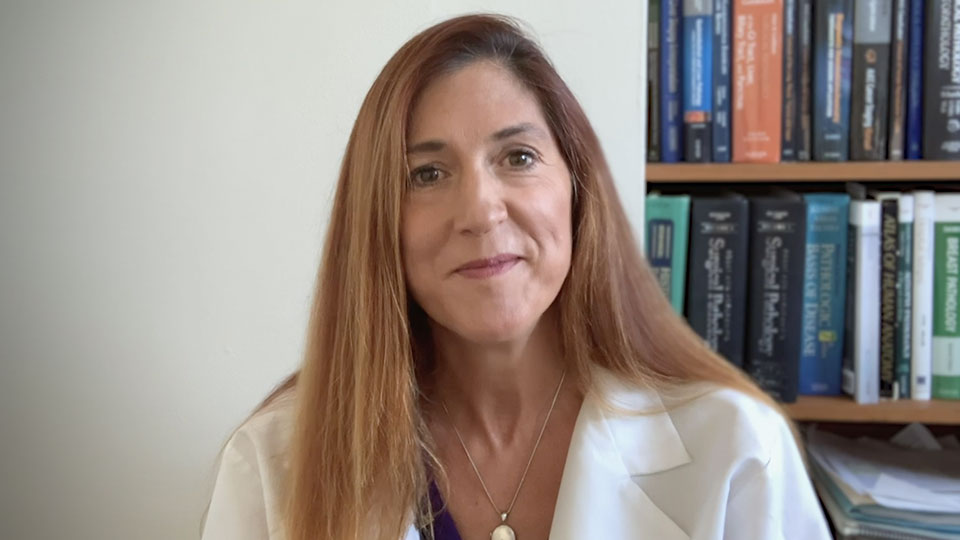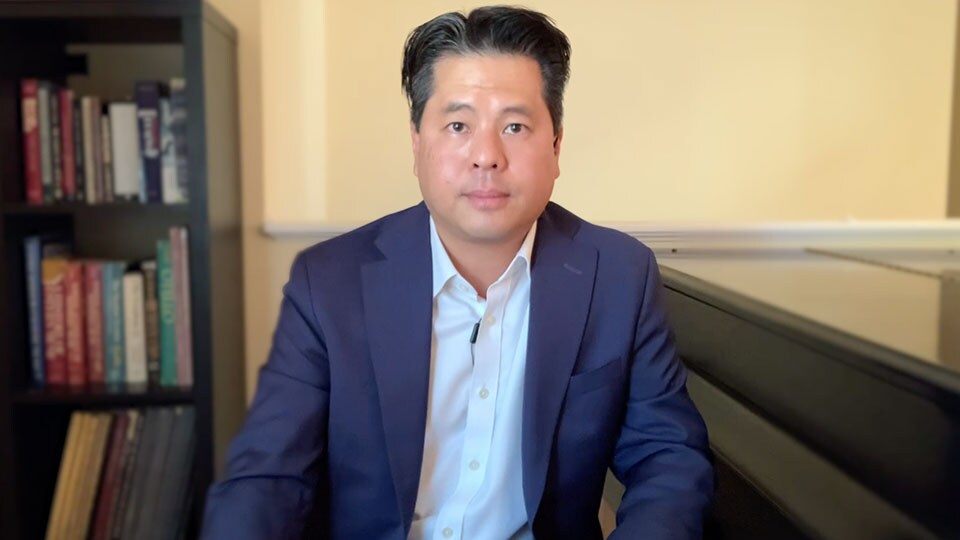Oncology
What if you could standardize and streamline oncology workflows for efficiency, speed and consistency?
These are major questions in oncology today. What if you could realize efficient workflows across your cancer care domains and locations? What if you could effectively translate best practices across locations within your health system? What if you could automate processes within the care pathways, driving efficiency and consistency of care, and shortening the time to diagnosis and treatment while increasing both patient and staff satisfaction? This article will look at two examples of overcoming complex workflows in two oncology domains: pathology and radiation oncology.
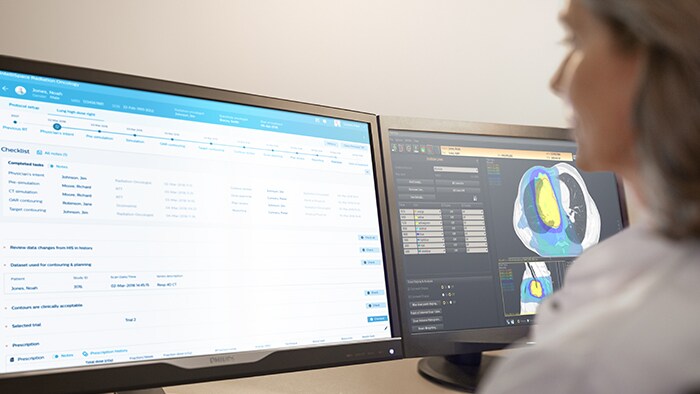
At a glance
Challenge Achieving an efficient and accurate diagnosis and personalized therapy care pathway for each oncology patient is complex because of the numerous workflows and large amounts of diagnostic data, as well as the growing number of available therapy options.
Solution Integrate and optimize oncology workflows within and across the many specialties involved in cancer care, providing timely standardization and consistency.
Results Enhance productivity and collaboration with digital pathology. Accelerate and streamline complex radiation oncology workflows with intelligent patient management.
Patients deserve speed and efficiency on their pathway
How can you provide precise diagnosis and treatment with the efficiency, consistency and quality that each patient deserves? Integrating and optimizing oncology workflows within and across specialties and providers is key to reducing delays, inefficiencies and hand-offs. Let's examine two examples of overcoming complex workflows, first in pathology and then in radiation oncology.
Speed and efficiency in workflows across specialties have a huge impact on the patient experience, staff experience, and ultimately patient outcomes. The challenge that many cancer teams face today is that precision diagnosis and treatment involve multiple specialty departments and can span multiple care locations, depending on the patient and the health system.
Pathology is facing a crisis
97%
“97% of departments don’t have enough histopathologists for the workload, and that workload is rising”
Prof. Jo Martin, President of Royal College of Pathologists
19hrs
19 hours/day spent on physical slide logistics reported in laboratory with 220 cases/day2
98%
An estimated 98% of pathologists are relying on manual workflows and microscopes for primary diagnosis, which can cause delays and inefficiencies, and create barriers for remote collaboration3
In crisis, but essential
Pathology is integral in the cancer care pathway, and moving to digital pathology is a valuable step to support integrated diagnostics and address the challenges of increased volume of cancer diagnostics and the impact of global shortage of pathologists on oncology care.
25%
productivity with digital pathology workflow1
Digital workflows can increase productivity by 25%1 and eliminate delays that occur when pathologists are waiting for analog slides to be delivered. It also enables cases to easily be routed to specialists within the pathology department as well as allowing for remote reading, collaboration and consultation across geographies. Digital tools can also streamline and improve the robustness of pathology with automated (AI-based) tissue characterization, reducing the amount of human interaction needed to come to a definitive diagnosis. When workflows are all digital, seamless integration with pathology, oncology and radiology specialties is possible.
Where digital pathology is working
Pathology laboratories that have transitioned to digital are leading the way. Currently Philips has assisted laboratories worldwide in the move to a fully digital workflow, representing more than 14 million scanned slides.* In fact, Philips partnered with LABPON in the Netherlands to realize the world’s first digital pathology diagnostic laboratory workflows. LABPON has been able to transition its entire workflow to digital processes, demonstrating its commitment to ensuring its patients and clinical colleagues receive the fastest and best-informed diagnoses possible.
19 hours saved/day through increased lab efficiency2
Easier collaboration across sites, reduction in costs
Simplified preparation for MDT discussions
Ability to offer remote consultation as external services
Dr. Julie Steele on the greater collaboration allowed for by digital pathology
I think digital pathology, by allowing us to have experts in remote sites real-time read a case with us, it just basically shrinks the world. It makes us have access to people it might take a great amount of time to send a case to. It’ll bring us closer together and we’ll have the ability to give patients even better-quality diagnoses."
Julie Steele, MD
Department Chair of Pathology Scripps Clinical Medical Group & Service Line Director, Oncologic Pathology for the Scripps, MD Anderson Cancer Center
Next, let’s take a look at radiation oncology, and the workflow challenges there.
Time from patient referral to treatment is too long
Uncertainties along the way can impact quality and make it difficult to consistently provide accurate, timely treatment. This can prove even more challenging for cancer centers that support multiple sites across locations and want the efficiency and productivity that make it possible to deliver high-quality personalized treatment.
Radiation therapy can be effective in helping patients overcome cancer. At the same time, radiotherapy processes are often fragmented and inefficient. Radiation oncology planning is labor-intensive with frequent handovers, long wait times and lags in data transfers between systems that can impact quality and increase time to treatment.
Dr. Lane Rosen on the need for seamless workflow
One of the things that I see as a roadblock in so many centers is coordination between the various aspects of a department. In order to make a facility flow properly you want to make sure that the left hand and the right hand know what each other are doing."
Lane Rosen, M.D.
Director of Radiation Oncology, Willis-Knighton Cancer Center
Streamlining complex oncology workflows
Streamlining oncology workflows is not only possible—it’s being put into practice around the world. Oncology care requires more streamlined and integrated approaches across patient pathways. From diagnosis and staging, to treatment decision, to therapy planning and follow-up, Philips is addressing challenges in cancer care by providing solutions across the entire care delivery pathway.
Where is collaboration happening?
One place where this coordination is taking place is the South West Wales Cancer Centre (SWWCC) in the U.K., which has entered into a collaboration project with Philips with the goal of improving the consistency, efficiency and quality of its radiotherapy planning workflow.
Goal: reduce referral to treatment to 14 days from a baseline of 31 days
The team’s ambition is to reduce the time from referral to treatment to 14 days for 80% of their breast cancer patients, from a baseline of 31 days. Pathway optimizations, including remote contouring and therapy plan approval, automated image export, automated breast planning on the Philips Pinnacle treatment planning system and removal of the Vsim check, have already led to an improved breast workflow of 22 days. This is just one example of what’s possible when oncology workflows are streamlined and standardized.
How Philips can support you
Philips IntelliSite Pathology Solution
Philips IntelliSite Pathology Solution is a scalable product with proven technology that enhances productivity with high-resolution digital images, collaborative features, and case management tools. It is designed to support your clinical practice, improve patient care and reduce costs across your healthcare system.
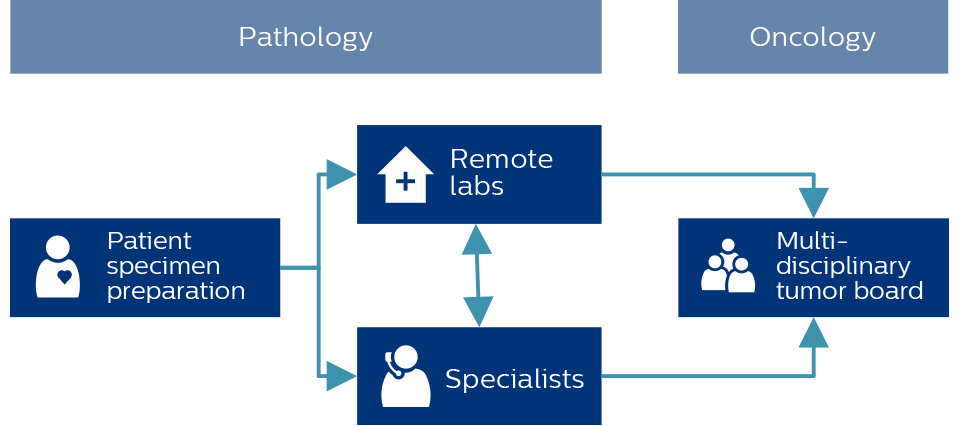
Go Deeper Are you interested in learning more about how these solutions can help you address your challenges?
Radiation Oncology Orchestrator
Radiation Oncology Orchestrator is an intelligent patient management solution designed to streamline and accelerate workflow from referral of the patient to the start of treatment by managing complexity, improving efficiency and enabling operational excellence.
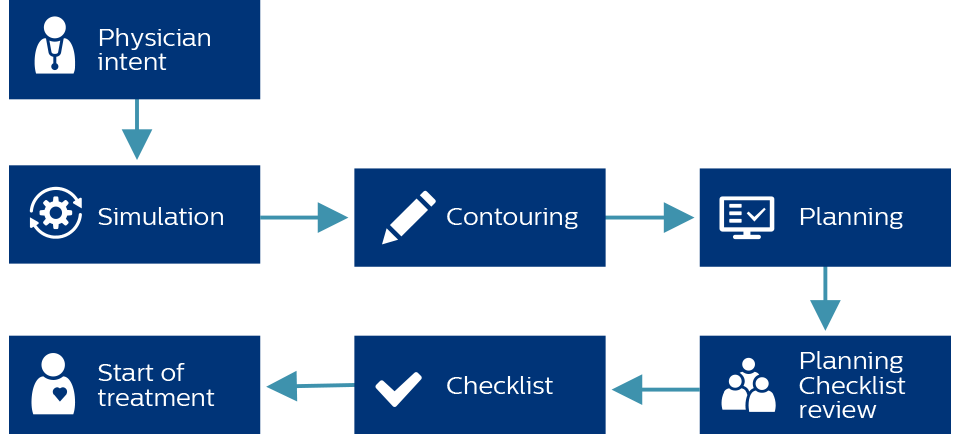
Go Deeper Are you interested in learning more about how these solutions can help you address your challenges?

Get in contact with our Oncology specialists
Share this article
At a glance
Challenge Achieving an efficient and accurate diagnosis and personalized therapy care pathway for each oncology patient is complex because of the numerous workflows and large amounts of diagnostic data, as well as the growing number of available therapy options.
Solution Integrate and optimize oncology workflows within and across the many specialties involved in cancer care, providing timely standardization and consistency.
Results Enhance productivity and collaboration with digital pathology. Accelerate and streamline complex radiation oncology workflows with intelligent patient management.
Share this article
Other challenges you might be facing
See what other thought leaders have to say

More information about Oncology Solutions
Find out how Philips can help you enable a clear care pathway with predictable outcomes for every patient.
Results from case studies are not predictive of results in other cases. Results in other cases may vary. * Histology cases on average 3-5 slides per case.
